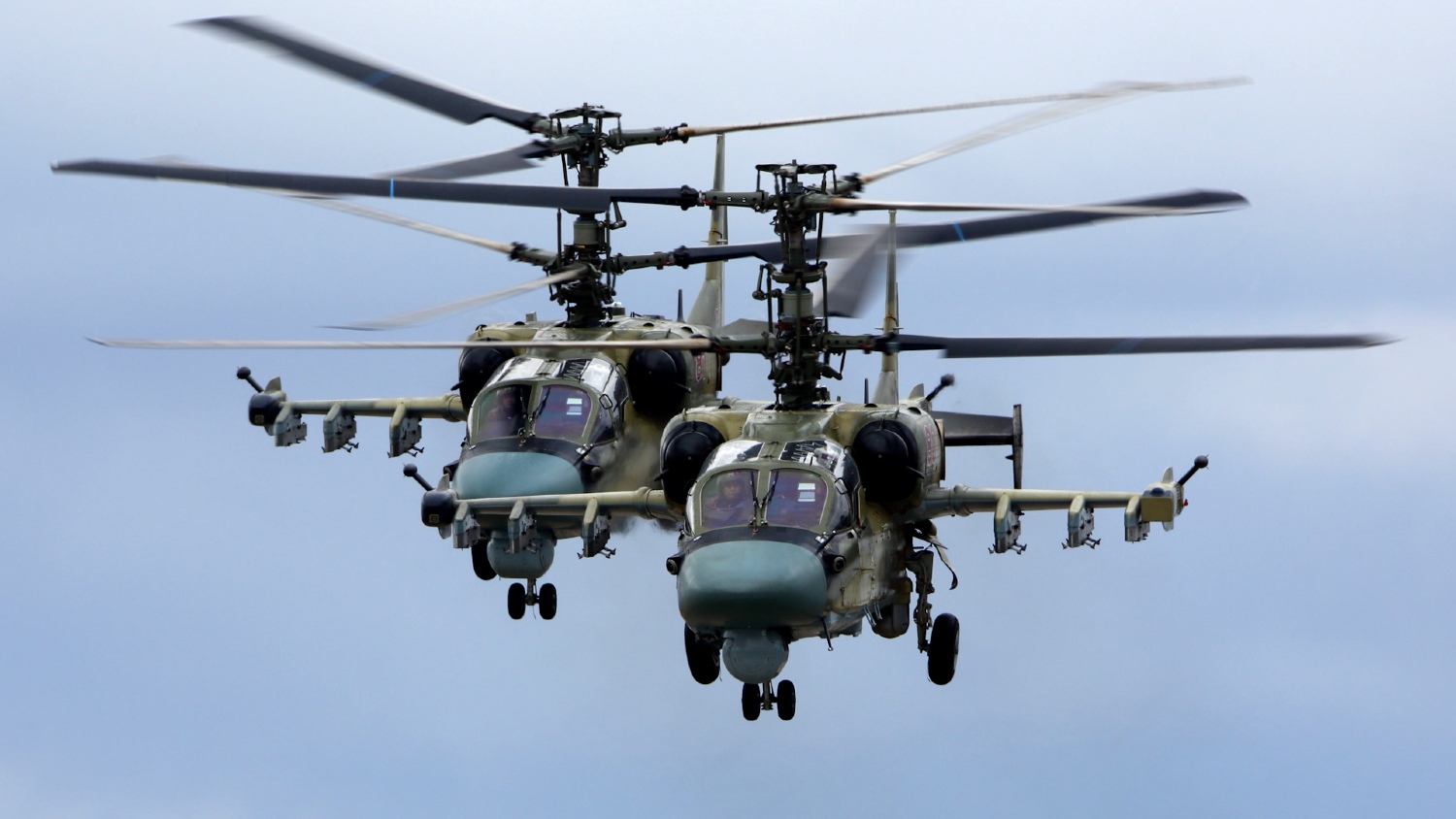The Ka-52M attack helicopter, Russian Air Force’s (RuAF’s) frontline gunship credited with several combat kills, is being equipped with a ventral all-round radar station to allow it to undertake all-weather, round-the-clock reconnaissance and target acquisition missions.
“The Ka-52M attack helicopters will receive a new all-round radar station operating in the centimeter range. These stations will allow helicopters to detect a wide range of air and ground targets, such as enemy aircraft, helicopters, UAVs, armored vehicles, artillery positions, concentrations of manpower and other military personnel, and objects, including in high-detail radio vision mode,” an informed source told Russian state news agency RIA Novosti.
He added that with the new radar, the Ka-52M can conduct all-weather and round-the-clock reconnaissance and target designation in potent natural and artificial radio interference conditions. In particular, helicopters can detect targets with low radar contrast.
According to the source, the Ka-52M will be able to use missiles from the Vikhr or Izdeliye 305 family to strike small enemy tank-type targets in conditions of zero optical visibility using only its target designation data, rather than relying on outside sources for information about the enemy targets’ coordinates.
Additionally, the news agency said in its report that it was told by another source earlier this year that the Ka-52M was now also capable of carrying Izdeliye-305 missiles. It was claimed to be deployed with the Northern Military District Zone.
The source told the agency that the Russian military was planning to test the helicopter with the new all-around radar station system in Ukraine, or the ‘special military operation’ zone as they like to call it. Although this information could not be independently corroborated, Ukraine has become a testing ground for the latest capabilities by both sides.
Until now, the Ka-52 has been equipped with the Moscow-based Phazotron-NIIR FH01 Arbalet-52. The helicopter’s nose houses a 31.5-inch mechanical radar antenna for a Ka-band (8-millimeter wavelength).

Reports in September last year indicated that Russian troops had successfully tested the upgraded Ka-52M reconnaissance and attack helicopter in the special military operation in Ukraine.
At the time, an unknown source told TASS, “Currently, the Ka-52M is undergoing state trials, and the military has decided to test the upgraded gunship in the special operation. The helicopter has proven its worth in action. Following its use, defense officials recommended the industry for finalizing and fine-tuning some systems.”
Only in July this year did the first photos of a new variant of the modernized Ka-52M combat helicopters appeared online. According to some reports, the upgraded Ka-52 sports the V006 Rezets radar from the Saint Petersburg-based Zaslon. This radar has a fixed AESA antenna with 640 transceiver modules and works in the X band.
The Cutting-Edge Alligators
The Ka-52 is a highly maneuverable helicopter that can eliminate enemy tanks, armored and unarmored ground targets, low-speed aerial targets, and soldiers in tactical depth and at the front lines. It is also an aerial command post and surveillance platform for a squadron of attack helicopters.
In the special military operation zone, Ka-52s are frequently used to strike Ukrainian troops and equipment while supporting ground forces. When Ukraine launched a counter-offensive in June, a well-planned minefield, Russian remote mining equipment, and the usage of the Kamov Ka-52 Alligator attack chopper were among the unpleasant surprises the Ukrainian forces encountered.
As depicted in numerous videos posted on social media daily, the Alligators have been known to disable advancing Ukrainian armor day and night skillfully. The integration of a new radar, as claimed by reports, would, thus, equip the Russian attack chopper with additional capabilities.
Russian helicopter Ka-52M hit valuable "NATO trophies" pic.twitter.com/YPDqBRTm1l
— Sprinter (@Sprinter99800) July 23, 2023
Over time, the helicopter has become the mainstay of Russia’s forward operations, destroying Ukrainian tanks and armored vehicles advancing towards the Russian positions using guided high-precision Whirlwind missiles. The helicopter fires the unguided missiles to attack enemy positions and columns.
These choppers operate safely from outside the MANPAD range of advancing Ukrainian columns. They are protected from attacks by Ukrainian fighters by Russian Aerospace Forces (RuAF) Su-35S and Su-30MS fighters, armed with long-range RVV-BD missiles, flying over the battlefront 24×7.
Latest Defence Intelligence update on the situation in Ukraine – 07 August 2023.
Find out more about Defence Intelligence's use of language: https://t.co/9fD0Axaaaf
🇺🇦 #StandWithUkraine 🇺🇦 pic.twitter.com/ny7zQjiuMP
— Ministry of Defence 🇬🇧 (@DefenceHQ) August 7, 2023
A British intelligence update published in August this year had, however, expressed skepticism about the Ka-52s on the frontlines. It said, “At the start of Ukraine’s southern counter-offensive from June 2023, Russian attack helicopters proved effective. However, in recent weeks, Russia appears less able to generate effective tactical airpower in the south.”
Several videos have also appeared on social media showing Ukrainian troops shooting down these expensive gunships. However, despite the losses incurred by the helicopters, Ukrainian officials have frequently expressed concerns about the Ka-52’s lethality owing to the burned-out wreckages of their armored vehicles.
If true, adding a radar station system would significantly bolster the helicopter’s capability and reduce the response time by giving more independence in target recognition and designation. As the war grinds on, the Ka-52s seem to be becoming more lethal in what is a signal that they are here to stay along the borders.
- Contact the author at sakshi.tiwari9555 (at) gmail.com
- Follow EurAsian Times on Google News




